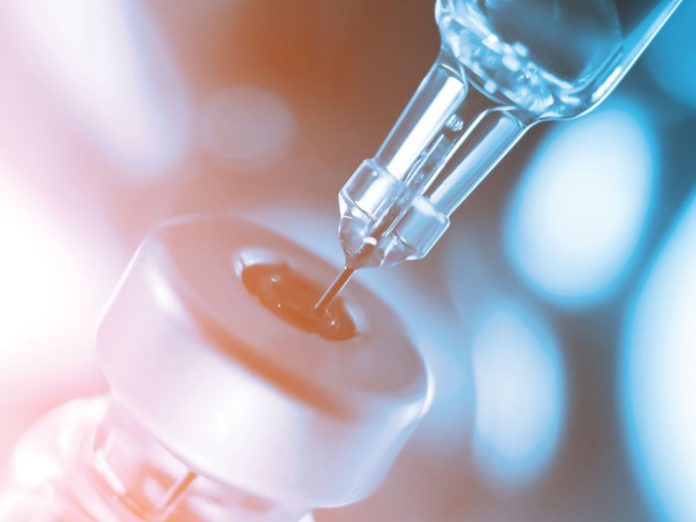Moishy was just eight when he was diagnosed with type I or juvenile diabetes. Our little trooper took it all in stride—the fluctuations in his blood sugar, the insulin shots and multiple daily pricks—with spunk and an upbeat attitude. We cheered Moishy on as he took charge of his condition from an early age, not allowing his diabetes to prevent him from leading a full and active life.
Moishy was eventually outfitted with a pump that delivered a steady dose of insulin and could be adjusted before meals. He always kept a spare vial of insulin with him just in case of emergencies. He checked his blood sugar both at home and in yeshivah, taking a bolus insulin shot before a large meal or whenever he needed it.
Since Moishy was exceptionally mature, we trusted him implicitly to inform us if he felt unwell or if anything seemed off. Our doctor supported this approach, explaining that it is healthiest for a child, if possible, to take responsibility for his or her own health.
The summer Moishy turned 14, he expressed an interest in attending a traveling camp that would be taking campers to scenic locations in New England, including New Hampshire and Vermont. The ten-day camp was around the cost of four weeks in a standard camp in the Catskills, and many of his friends were going, which clinched the deal. Of course, we discussed it with his endocrinologist, who gave Moishy the go-ahead.
Two days before Moishy left, when he was all packed, I got a case of the jitters. Perhaps I was being too hasty, allowing such a young boy with diabetes to travel far from home. What if his blood sugar suddenly spiked? What if he used up his insulin? The what-ifs kept me awake at night, and I called the doctor once more to discuss my fears.
“Don’t worry about Moshe, Mrs. Green,” he assured me. “Your son is a very responsible boy and he knows how to take care of himself. Just make sure the supervisors on the trip are fully aware of his condition.”
I had already briefed the two counselors, but I called them again to remind them that Moishy was insulin-dependent and that even with the pump, he needed his insulin close by at all times. They both reassured me that they were on top of the situation and that I needn’t worry.
Still, as a Yiddishe mama, I was a bundle of nerves as I sent Moishy off with an oversized suitcase, plus a backpack with his insulin pump, test strips and tester, Humalog and NovoLog KwikPens, and a spare vial of insulin just in case. I reminded Moishy a hundred times never to forget his insulin and to call home immediately in case of an emergency.
“Don’t worry, Ma,” said my confident son. “I have it all under control.”
Famous last words.
The trip began with a whirlwind drive north. The boys spent a beautiful Shabbos in Boston at the homes of local hosts and left on Sunday morning for the three-hour drive to Vermont. They planned to hike up Camel’s Hump, the second-highest mountain in the state. This was a strenuous late-afternoon hike, after which they would camp on the summit overnight and descend the following day.
Before setting out on the trip, the boys enjoyed a hearty meal of bagels, cream cheese and lox, fortified by iced coffee. Although normally Moishy didn’t eat bagels since they had a very high glycemic index and would make his blood sugar spike, he was unusually hungry. He also figured that the exertion of the hike would neutralize his blood sugar. Naturally, his pump would deliver regular infusions of insulin as he needed it.
The boys began to hike up the mountain, singing and in high spirits. It was a steep uphill climb, and the temperature was pushing 90 degrees. They guzzled bottles of ice-cold water as they forged uphill, heading for the prize, the scenic view at the summit.
Three-quarters of the way up the mountain, Moishy began to feel nauseous and dizzy. These were sure signs his sugar was spiking. He continued hiking resolutely, not wanting to alarm the group. When they arrived at the summit and were marveling at the scenery, Moishy quickly checked his pump and was alarmed to see that the insulin supply was depleted. This meant he wasn’t getting regular insulin infusions to counteract the effects of the bagel.
Panicking, he grabbed the test kit from his knapsack to test his blood sugar. His fingers shook as he squeezed a drop of blood onto the test strip, entered it into the tester and waited anxiously for the results.
The machine read 340, a dangerously high number even for a diabetic. Apparently, the bagel he’d eaten earlier, without the benefit of the insulin in his pump, had caused his sugar to spike.
Moishy found it hard to breathe. He quickly searched for the spare bottle of insulin he kept in his backpack, but it wasn’t there.





















